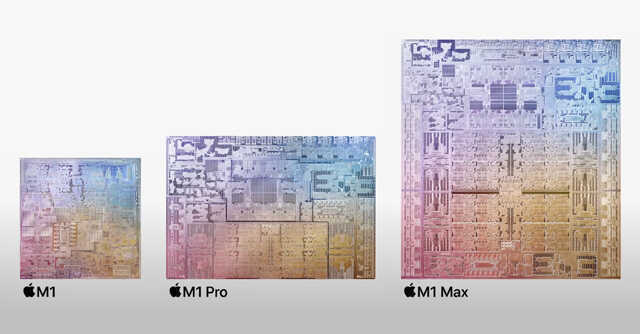
How powerful are Apple's new M1 Pro and M1 Max chips?


At the heart of Apple's latest MacBook Pro devices are their new ARM-based chipsets, M1 Pro and M1 Max, which offer a major upgrade in terms of performance and efficiency over last year's M1 chipset. The new chipsets were unveiled along with the new 14 and 16-inch MacBook Pro notebooks at the Apple event on October 18.
The new chipsets push the boundaries of what Apple’s silicon-based notebooks can do, and as per Apple, puts them even ahead of devices running on chipsets from the more established chip makers.
Last year’s M1 chipset was Apple's first proprietary ARM-based silicon that was designed in-house and powered last year’s 13-inch MacBook Pro and MacBook Air notebooks and even the iPad Pro tablets. Though it was a very capable product it was not cut out for pro-level tasks and heavy workloads.

Based on the same 5nm architecture as the M1, the M1 Pro and M1 Max have 10 core CPUs with eight dedicated performance cores for heavy lifting and two efficiency cores for basic tasks.
This allows the new chipsets to muster up to 70% faster CPU performance than M1 and makes them better at handling demanding tasks like compiling projects in Xcode. Likewise, in terms of GPU performance, the M1 Pro is up to 2x faster and M1 Max is up to 4x faster than M1, which makes them better at handling graphics-intensive tasks and workflows.
The new chipsets also have enhanced media engines that include dedicated ProRes accelerators that are specifically meant to boost video processing for professionals, allowing playback of multiple streams of 4K and 8K ProRes videos.

Apple has also added a 16-core Neural Engine on the new chipsets for faster on-device machine learning (ML) acceleration.
M1 Pro
In addition to the 70% upgrade in CPU and 2x jump in GPU performance over their predecessor, the new chipsets also offer 1.7x more CPU performance as compared to the latest 8-core based laptop chips from rivals and can hit peak performance using up to 70% less power. Also, in comparison to integrated graphics on any of the latest 8-core PC laptop chips, the M1 Pro offers up to 7x faster GPU performance. Apple claims the M1 Pro's GPU performance is better than some of the discrete GPU for laptops.

The M1 Pro also offers up to 200 GBps of memory bandwidth with additional space of up to 32 GB for unified RAM, providing more overhead for creators, 3D artists, and game developers. This is a big upgrade as most high-end laptops for creators and professionals only offer up to 16GB of graphics memory.
M1 Max
The M1 Max packs in 57 billion transistors, which makes it 70% more powerful than the M1 Pro and 3.5x more powerful than the M1, according to Apple. With 32-cores, the M1 Max’s GPU performance is on par with high-end GPUs typically used in high-end compact pro-level notebooks while using 40% less power. Apple claims the new MacBook Pro running on M1 Pro can perform up to 13x faster complex timeline rendering in Final Cut Pro as compared to last year’s 13-inch MacBook Pro. It can also transcode ProRes video in Compressor at up to 10x faster speed than the previous-gen 16-inch MacBook Pro.

On top of the improved CPU and GPU performance, the M1 Max offers twice the memory interface of M1 Pro, bringing in up to 400GBps of memory bandwidth and up to 64GB of unified RAM.
To sum it up, as Johny Srouji, Apple’s senior vice president of Hardware Technologies put it, the massive gains in CPU and GPU performance, more memory bandwidth, and new media engine with ProRes accelerators, M1 Pro and M1 Max chipsets take Apple silicon even further and are unlike anything else in pro-level devices.
